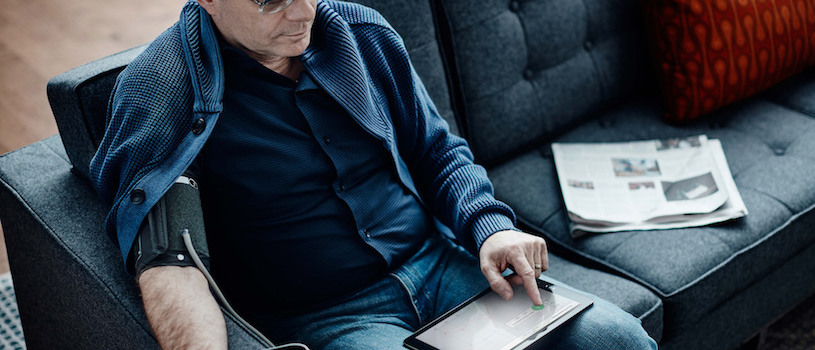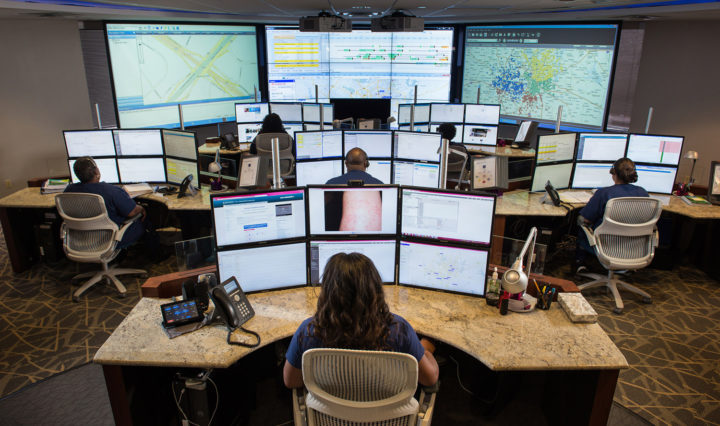Seniors and innovative technology is not a pair often associated with each other. Yet assistive tech (AT) can make aging in place possible for seniors and enrich their lives by addressing their primary concerns: fighting loneliness, maintaining independence and confronting healthcare challenges. For seniors and the health and human services providers who work with them, these concerns grow in tandem with the aging population. The National Institute on Aging reports that, in the U.S. alone, the number of citizens aged 65 and older will increase from 48 million now to 88 million by 2050.
Technology Use Growing Among Seniors
Too often, health providers overlook the ways technology could address the needs of seniors, believing they find mobile technology foreign and unfamiliar. However, the digital revolution has affected all generations, seniors included. There’s been significant growth in smartphone use among adults 65 and older.
The Pew Research Center reports that in 2013, just 18 percent of this group owned smartphones, compared to 42 percent today. This group’s internet use has also increased, with 67 percent of today’s seniors using the internet. This not only signifies an uptick in technology usage, but these devices can help this demographic easily adjust to integrating technology before they move to assistive technology.
Reduce Hospital Readmissions With Telehealth
Learn how Ascension at Home helps easily transition patients with telemonitoring. Download Now
Obviously, those numbers are smaller than the under-65 crowd, but show that a majority of seniors already use technology. Two questions remain: Will seniors familiar with technology be willing to use assistive tech to enrich their lives? And what barriers to adoption can health and human services providers help them overcome?
Assistive Tech Helps Seniors Age in Place and Relieve Isolation
The Assistive Technology Industry Association (ATIA) defines AT as “any item, piece of equipment, software program, or product system that is used to increase, maintain, or improve the functional capabilities of persons with disabilities.” As people age, their vision, hearing, movement and dexterity may decline. AT allows people to compensate for those disabilities.
One way to convince seniors to use technology is to show them how it has helped others maintain social connections, age in place and improve their access to healthcare.
Using tablets designed for seniors can help them stay connected with distant family, maintain a connection during power outages or other emergencies and rekindle social group or hobby participation that may have been limited by a disability. Retaining connections with family and friends via technology is one step in reducing the loneliness that can occur when family and friends move away or as impairment limits the ability to drive or walk.
Connection also helps seniors intent on aging in place maintain their independence. Connected homes allow devices to be controlled using an internet connection and apps via smartphones or smart televisions. This technology can be used to monitor the opening and closing of doors or windows, as a way to monitor for intruders while keeping seniors safe. Wearable devices can track movement and body position, which can alert family members or physicians if a user has fallen and needs help.
For addressing potential health issues, wearable devices can also track important health data, like blood pressure, heart rate and blood sugar. Healthcare teams can be alerted when measures exceed normal ranges. The same tablets used to keep in touch with family and friends are also increasingly being used to stay in touch with doctors and other health providers. Video-enabled visits allow patients with mobility issues to have regular appointments from the safety and convenience of their homes. They also allow better follow-up after hospital stays to ensure the patient is recovering as expected.
Overcoming Adoption Barriers With Education
One of the greatest barriers to adoption is being unsure how to use a device. Pew Research found that nearly three-quarters of older adults admit they need help when setting up or learning how to use new electronic devices. Health and home services professionals can aid in adoption by educating seniors on how to use the device, picking software programs that are simple to use and choosing devices that are easy to hold, have adaptable screen resolution to adjust for vision deficits and don’t require the use of small buttons or highly dexterous movement to operate.
With these adaptable technologies, not only can seniors use devices that are customized specifically for their lifestyles, but they can also ensure their own health as they age in place.
Health providers can aid seniors in embracing devices to enrich their lives. Explore more healthcare technology solutions that can improve the patient experience.








